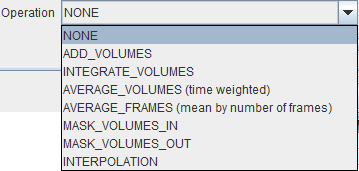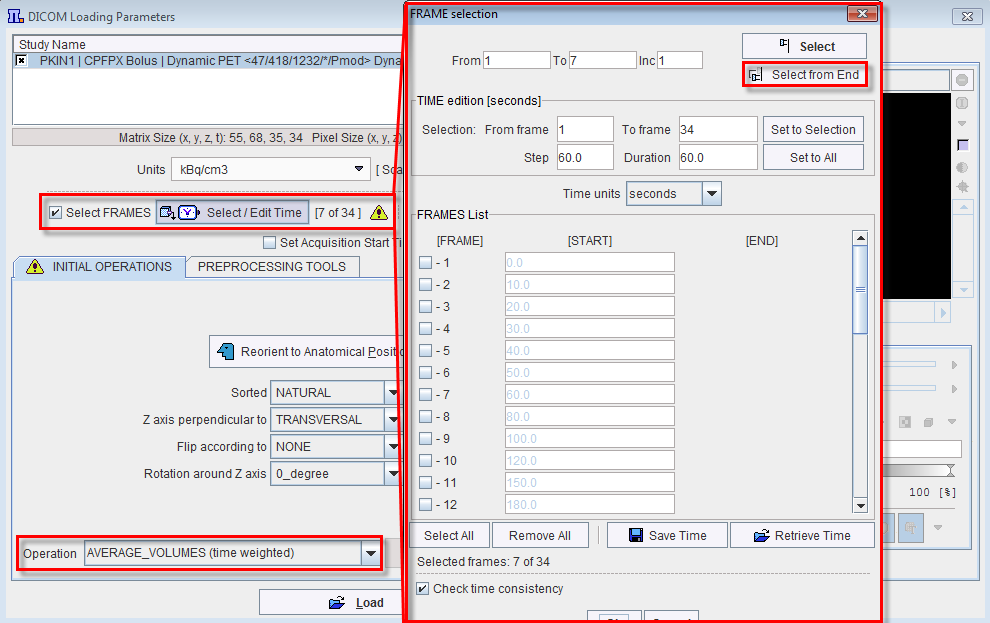Enabling Pre-Processing Operations
In addition to image reorientations there are several optional preprocessing methods available. On the INITIAL OPERATIONS tab the Operation selection provides the operations shown below.

The example below illustrates how the last seven acquisitions of a dynamic study can be averaged by selecting the frames sub-range and setting the Operation selection from NONE to AVERAGE_VOLUMES (time weighted).

The tab PREPROCESSING TOOLS makes available two successive filters as illustrated below

The purpose of Normalization is to transform reconstructed counts into activity density values calibrated in kBq/cc. The following parameters are needed for the calibration process:
- Half Time is used for a correction of the physical decay to the acquisition start. If the SPECT counts are already decay corrected, set Half Time to a big value to avoid an additional correction.
- Calibration is a factor for the conversion of the measured SPECT counts - which represent only a fraction of the emitted photons - into the true number of physical decays.
The calibration factor can be determined using a phantom filled with a known, representative activity concentration. Phantom images are acquired, corrected and reconstructed using the same protocol as the research study. Then, the image values are decay corrected, time and volume normalized, resulting in images with SPECT counts per ml per second. As the next step, a homogeneous VOI is outlined and the average pixel value calculated. Finally, the calibration factor is calculated by dividing the known true phantom activity concentration by the VOI average. - Normalize Time is a flag indicating whether the values in the file are already average counts per time (.ie. not total accumulated counts during the acquisition). If your image files just contain counts, check this box, and the image values are divided by the acquisition duration.
- Normalize Volume is a flag indicating whether the values are already counts per unit volume. If not, check this box, and the values are divided by the image voxel size (known from the image header).
- Decay Correction: Apply a decay correction to scan start.
Note: The preprocessing tools are plug-ins and must be configured in the main configuration dialog.


